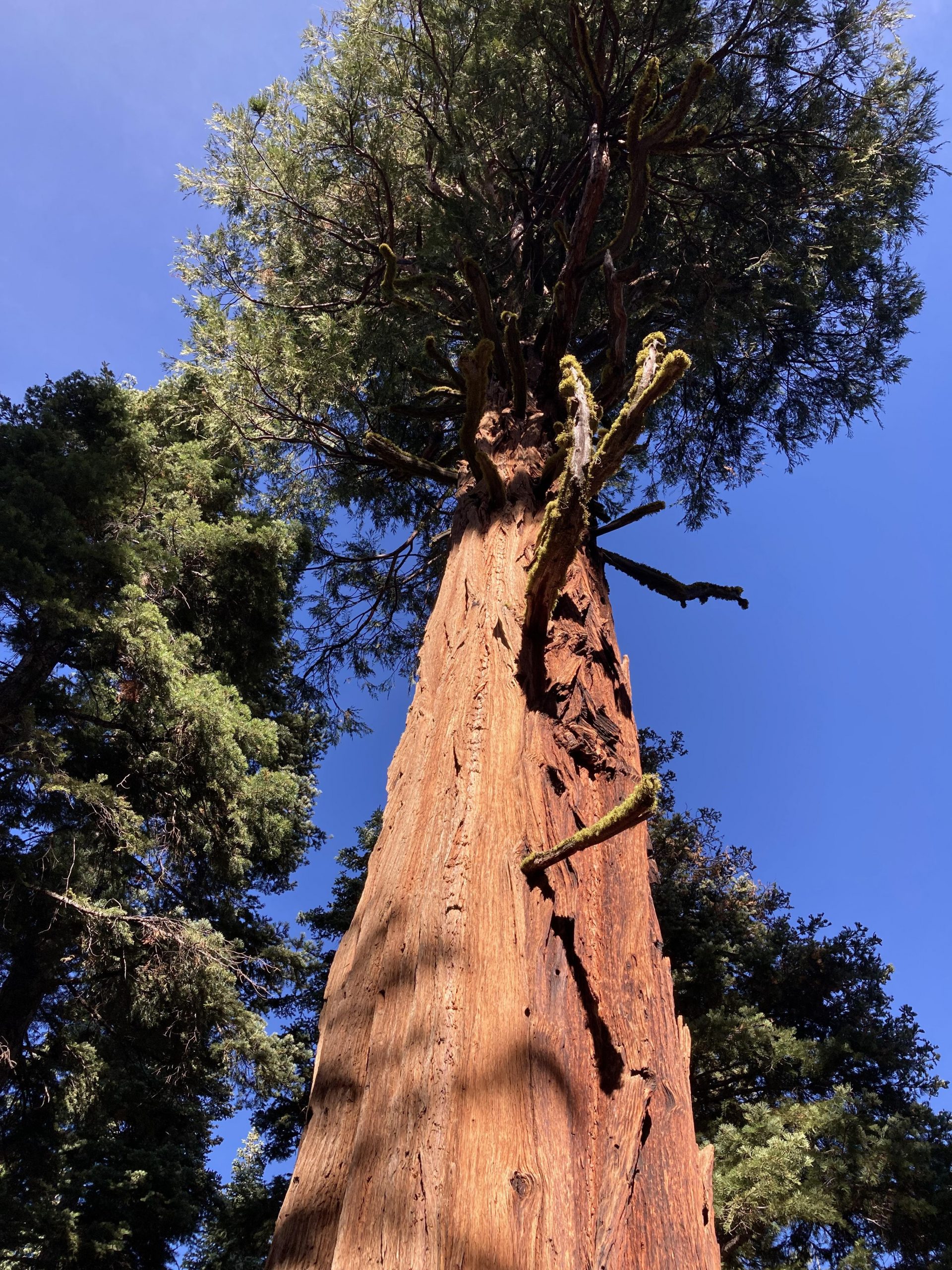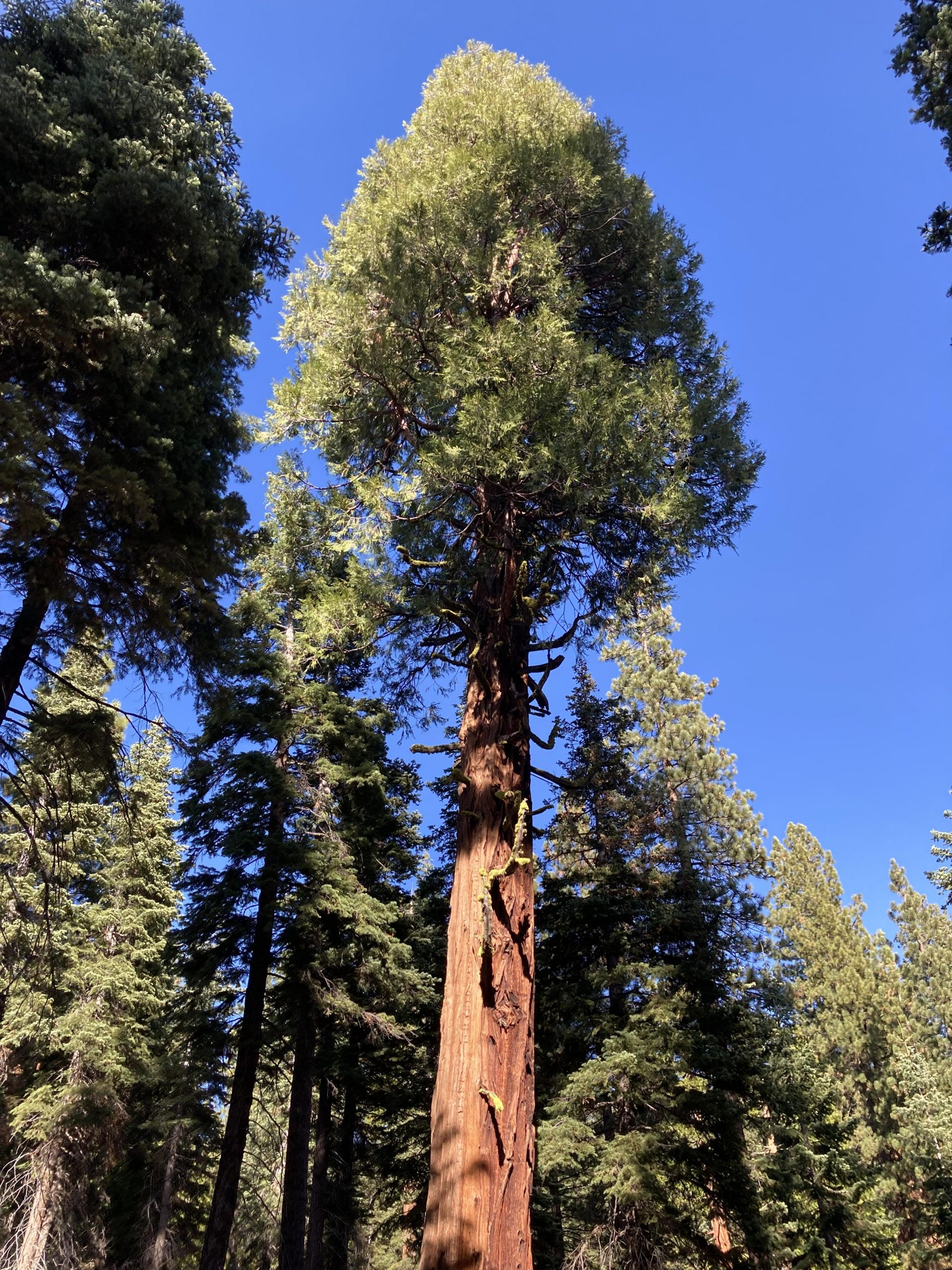
By Tim Hauserman
Having spent a lot of time wandering through the Sierra forests alone, I’ve had plenty of opportunity to contemplate which tree species I find most interesting. Some of my favorites sit at the highest elevation. The scrappy white bark pine, majestic western white pine and especially the magical dark green hemlocks with their wizard hat tops. Perhaps these high altitude trees are especially appreciated because it takes a hearty hike to get to them. But one of my favorite Sierra trees are the ancient incense cedars that are growing right in our backyards near the shores of Lake Tahoe.
There are quite a few several hundred year old cedars tucked away amongst the cabins on the North and West Shores of Tahoe. They have been here a lot longer than those cabins, but fortunately were spared during construction. A mature cedar has bark that is a lovely shade or orangish red. You often would have to climb up at least thirty feet to grasp the first branch, which holds thick clumps of dark green needles. If there is a tree on your property you most likely have seen some of it’s giant branches plopped down into your yard, as the branchless section of the tree keeps getting bigger each year.
The ancient cedars that dot the landscape of our neighborhoods are especially interesting because each tree is unique. Some have dead pointy tops, others have giant branches reaching out for about a dozen feet and then heading straight up-like a muscleman showing off his biceps, and some just have one or two large branches at the top with the rest of the tree without any green needles to take advantage of the sun—and yet they are still alive.

Like sequoias, cedars have thick bark that is resistant to smaller fires, although you will often see parts of the bark blackened from a long ago blaze. They also smell nice, as you might imagine, just like a cedar chest.
Cedars niche in our area is only up to about 6500 feet, a bit higher in south facing locations. If you see a reddish barked tree at about 7000 feet or higher it is most likely a mountain juniper. These beauties are usually quite a bit shorter than a monster cedar, and they have little greenish-blue berries that smell like gin (which is made from juniper berries).
Next time you are walking around your neighborhood, keep your eyes peeled for an orange behemoth of a tree that stands out amongst the grey trunks of the white fir and Jeffrey pine. Enjoy.


 Facebook
Facebook
 X
X
 Pinterest
Pinterest
 Copy Link
Copy Link